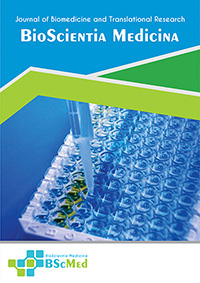Main Article Content
Abstract
Background: Early detection of non-small cell lung cancer (NSCLC) is critical for improving patient survival, yet current methods face challenges of invasiveness and limited accuracy. Exhaled breath condensate (EBC) offers a non-invasive window into the deep airways. This study aimed to synthesize and critically evaluate the diagnostic accuracy of genetic and epigenetic alterations in EBC for NSCLC detection.
Methods: We conducted a systematic review and meta-analysis of studies published between January 2015 and August 2025, sourced from PubMed, Scopus, Web of Science, and Embase. We included diagnostic accuracy studies evaluating genetic (KRAS, EGFR, p53) or epigenetic (gene methylation) markers in EBC against a histopathological reference standard. Data were used to construct 2x2 contingency tables. Methodological quality was assessed using the QUADAS-2 tool. A bivariate random-effects model was used to derive pooled accuracy estimates.
Results: Seven case-control studies, comprising 812 NSCLC patients and 995 controls, met the inclusion criteria. The analysis yielded a pooled sensitivity of 0.81 (95% Confidence Interval [CI]: 0.74–0.87) and a pooled specificity of 0.96 (95% CI: 0.93–0.98). The pooled diagnostic odds ratio was 112 (95% CI: 65–194), and the area under the SROC curve was 0.95 (95% CI: 0.93–0.97). However, extreme statistical heterogeneity (I² > 80%) was observed, and all included studies were rated at high risk of bias due to their case-control design, suggesting the pooled estimates must be interpreted with significant caution.
Conclusion: Analysis of DNA alterations in EBC shows promising diagnostic potential for NSCLC, particularly with high specificity. However, the current evidence is limited by significant methodological heterogeneity and study design flaws that likely overestimate performance. The primary contribution of this analysis is not a definitive accuracy value, but a critical appraisal of the monumental challenges in pre-analytical and analytical standardization that must be overcome for this technology to achieve clinical translation.
Keywords
Article Details
As our aim is to disseminate original research article, hence the publishing right is a necessary one. The publishing right is needed in order to reach the agreement between the author and publisher. As the journal is fully open access, the authors will sign an exclusive license agreement.
The authors have the right to:
- Share their article in the same ways permitted to third parties under the relevant user license.
- Retain copyright, patent, trademark and other intellectual property rights including research data.
- Proper attribution and credit for the published work.
For the open access article, the publisher is granted to the following right.
- The non-exclusive right to publish the article and grant right to others.
- For the published article, the publisher applied for the Creative Commons Attribution-NonCommercial-ShareAlike 4.0 International License.





